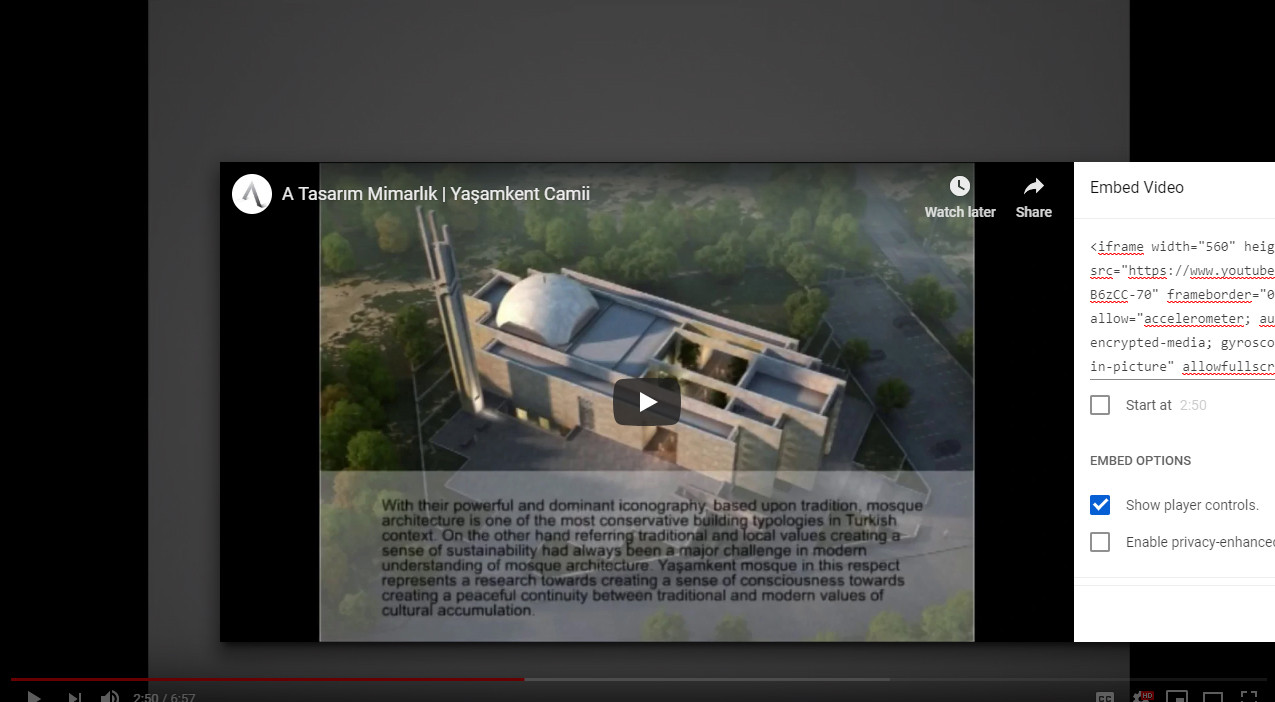
Located in a relatively small plot within the new development area of Ankara, which also gives its name to the complex, Yaşamkent mosque is search for balance between open and closed areas, modesty and expression, identity and convention as well as modernity and tradition.
The building is an outcome of topography where natural level difference is used to reorganize programmatic differences and creating a hierarchy between public and private entrances. The composition is based upon freestanding parallel walls not only defining the essence of interior space but also creating a transitory medium for exterior and interior spaces. As a powerful traditional element the walls are major expressions of architectural language. As they come together, limit and blur the boundaries alternative spatial experiences provided. Similar to walls, courtyard is a significant traditional element, which both unifies and separates the main praying area from library and less public areas like lodging. Courtyard is utilized as an instrument to integrate exterior and interior as well as soft and hard landscape. In the main praying hall a modest concrete dome not only used as a reference of tradition but also it upgrades the interior scale and provides significant mystique light quality.
Use of reinforce concrete and glass directly as a finishing element, the use abstract and solid geometries, modest simplicity and minimalist architectural attitude directly refers to a contemporary architectural language whereas abstract Kufic expression of minaret as well as the abstract motives of fences refer familiar traditional elements.
With all these characteristics Yaşamkent mosque must be seen as a challenge towards blurring the significant and ideological differences and popular architectural contradictions between traditional and modern.
I agree to the terms outlined below:
You agree to upload and assign Mosqpedia Database the rights to use the content worldwide and in perpetuity across all current and future media platforms. Mosqpedia Database may edit, copy, adapt and translate your contribution.
The content will be distributed under the Creative Commons Attribution-Deed – Attribution-NonCommercial-NoDerivatives 4.0 International – Creative Commons
All data will be stored in line with data protection regulations.
I agree to the terms outlined below:
You agree to upload and assign Mosqpedia Database the rights to use the content worldwide and in perpetuity across all current and future media platforms. Mosqpedia Database may edit, copy, adapt and translate your contribution.
The content will be distributed under the Creative Commons Attribution-Deed – Attribution-NonCommercial-NoDerivatives 4.0 International – Creative Commons
All data will be stored in line with data protection regulations.